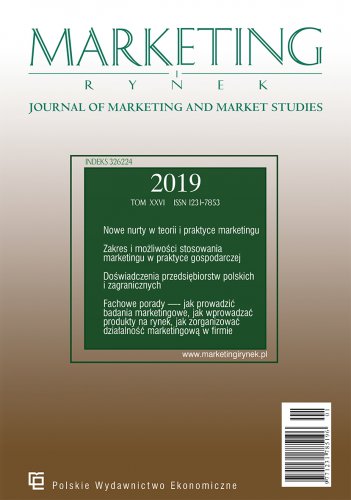Metoda pomiaru doświadczenia emocjonalnego odbiorców za pomocą narzędzia EMOJ. Studium przypadku Macerata Opera Festival
Artykuł przedstawia studium przypadku dotyczące zastosowania analizy emocjonalnej do pomiaru doświadczenia odbiorców w sektorze kultury. Przyjęta technologia umożliwia pomiar widowni poprzez wykrywanie twarzy osób i rozpoznawanie emocji, które odczuwają w czasie rzeczywistym podczas oglądania programu lub uczestnictwa w wydarzeniu kulturalnym. Jest to wynik długoterminowego projektu badawczo-rozwojowego, którego celem jest rozwój neuromarketingu poprzez doskonalenie tzw. ad wearable technology stosowanej w celu badania indywidualnej reakcji afektywnej i emocjonalnej w przestrzeni publicznej. Opracowana platforma analizy emocjonalnej o nazwie EMOJ latem 2019 r. została wykorzystana do analizy doświadczeń widzów Macerata Opera Festival – serii przedstawień operowych, które odbywają się na Sferisterio Arena w Macerata. Celem tego projektu jest dostarczenie użytecznych informacji na temat jakości każdego spektaklu i całego festiwalu postrzeganego przez widownię, aby udoskonalić widowisko i wskutek tego poprawić wyniki ze sprzedaży biletów w nadchodzących latach.
Bibliografia
Berry, L. L., Carbone L. P., Haeckel S. H. (2002). Managing the Total Customer Experience. MIT Sloan Management Review, 43(3).
Bradley, M. M., Lang, P. J. (2000). Measuring emotion: Behavior, feeling, and physiology. In R. D. Lane, L. Nadel (Eds.), Series in affective science. Cognitive neuroscience of emotion (pp. 242–276). New York: Oxford University Press.
Ceccacci, S., Mengoni, M., Generosi, A., Giraldi, L. (2018). Tools to make shopping experience responsive to customer emotions. International Journal of Automation Technology, 12(3). https://doi.org/10.20965/ijat.2018.p0319
Davenport, T. H., Beck, J. C. (2001). The Attention Economy: Understanding the new currency of business. Boston: Harvard Business Press.
Ekman, P., Friesen, W.V. (2003). Unmasking the Face: A Guide to Recognizing Emotions from Facial Clues. ISHK.
Hill, D. (2008). Emotionomics: Leveraging Emotions for Business Success. Kogan Page.
Klaus, P., Maklan, S. (2013). Towards a better measure of customer experience. International Journal of Market Research, 55, 227–246. https://doi.org/10.2501/ijmr-2013-021
Klaus, P., Maklan, S. (2013). Towards a better measure of customer experience. In: International Journal of Market Research. 55. 227-246. 10.2501/IJMR-2013-021.
Melero, I., Sese, F. J., Verhoef, P. C. (2016). Recasting the Customer Experience in Today’s Omni-channel Environment. Universia Business Review, 50, 18–37.
Mengoni, M., Frontoni, E., Giraldi, L., Ceccacci, S., Pierdicca, R., Paolanti, M. (2017). Customer Experience: A Design Approach and Supporting Platform. Working Conference on Virtual Enterprises. https://doi.org/10.1007/978-3-319-65151-4_27
Revello, A. (2015). Buyer Personas: How to Gain Insight into your Customer's Expectations, Align your Marketing Strategies, and Win More Business. John Wiley & Sons.
Schmitt, B. H. (2010). Customer Experience Management: A Revolutionary Approach to Connecting with Your Customers. John Wiley & Sons.
Seligman, J. (2012). Customer experience in modern marketing. Lulu.com.
Seligman, J. (2018). Customer Experience Management – The Experiential Journey. Lulu.com.
Shapiro, J.M. (2014). Impulse Buying: A New Framework. Proceedings of the 1992 Academy of Marketing Science (AMS) Annual Conference (pp. 76-80). https://doi.org/10.1007/978-3-319-13248-8_16
Villani, I. (2018). Transform Customer Experience: How to achieve customer success and create exceptional CX. John Wiley & Sons.

